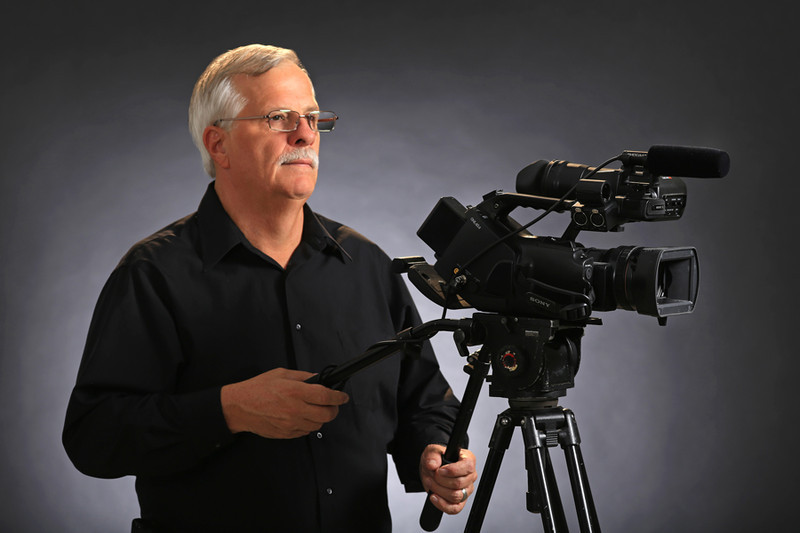Delving Into the Devices of Legal Videography: Unveiling Its Procedure in Safeguarding Genuine Aesthetic Testament for Judicial Proceedings
In the world of judicial procedures, the function of lawful videography stands as a foundation in maintaining and presenting visual proof. As technology continues to advancement, the systems behind lawful videography have actually ended up being significantly intricate, supplying a crucial layer of authenticity to testimonies captured on video clip. By diving into the functional intricacies of legal videography, one can uncover the thorough processes that protect the integrity of visual evidence presented in court rooms - Legal Videography. This exploration not just sheds light on the historical advancement of legal videography however likewise means the future fads that might better revolutionize exactly how aesthetic statements are maintained in the world of justice.
Historical Evolution of Lawful Videography
Taking a look at the historical development of legal videography reveals a substantial change in the recording and presentation of visual proof within the lawful landscape. In the past, legal procedures greatly depended on composed photographs and transcripts to record occasions and offer evidence. Nonetheless, with the advent of video innovation, the lawful sector witnessed a paradigm shift in exactly how visual testament was recorded and provided.
The development of lawful videography can be mapped back to the late 20th century when advancements in video recording equipment made it much more obtainable for usage in courtrooms. This technical advancement not just enhanced the precision and integrity of aesthetic proof yet additionally revolutionized the way cases existed to discretionary (Legal Videography). Lawyers started to acknowledge the convincing power of video recordings in conveying emotions, nuances, and non-verbal cues that created records or pictures alone can not record successfully

Innovation Developments in Video Documentation
What essential technical improvements have revolutionized video clip documentation in the lawful field? The lawful field has actually seen significant innovations in video documentation technology that have improved the authenticity and dependability of visual proof in judicial procedures.
Furthermore, advancements in video clip security and watermarking innovations have actually bolstered the safety and tamper-proof nature of video clip evidence, securing it against unapproved alterations or meddling. Furthermore, the introduction of cloud storage space solutions and remote gain access to capacities has streamlined the storage, retrieval, and sharing of video clip proof, helping with smooth cooperation among legal specialists and ensuring efficient accessibility to essential visual statements when required. These technological improvements in video clip documents have actually certainly reinvented the lawful field, improving the accuracy, reputation, and admissibility of aesthetic proof in judicial process.
Duty of Lawful Videographers in Court Settings
The evolution of video documentation modern technology in the lawful field has actually demanded a vital function for legal videographers in court room setups, guaranteeing the honesty and dependability of visual testaments provided during judicial process. Legal videographers play a fundamental duty in catching and preserving precise visual proof that can be essential in court situations. Their responsibility encompasses establishing tools, tape-recording process, and creating top quality video clips that precisely mirror the events in the courtroom.
In addition, legal videographers typically function very closely with legal teams to ensure that the video evidence aligns with the situation's demands and can be successfully offered in court to support the legal disagreements being made. Generally, the duty of legal videographers in courtroom setups is browse around here important in upholding the principles of justice and ensuring the transparency of legal process. Legal Videography.

Ensuring Admissibility and Honesty of Video Clip Proof
To keep the trustworthiness of aesthetic proof offered in lawful procedures, guaranteeing the admissibility and honesty of video proof is a crucial duty for lawful videographers. Admissibility refers to the approval of proof by the court, and for video clip evidence to site here be permissible, it needs to fulfill particular criteria. Legal videographers play a vital role in guaranteeing that the video clips they capture follow the regulations of evidence, such as integrity, significance, and authenticity.
Stability of video evidence involves maintaining the creativity and precision of the video from the moment it is videotaped till it exists in court. This includes securely storing the video files, recording the chain of custodianship, and protecting against any kind of meddling or modifications. Legal videographers must abide by rigorous methods to ensure the stability of the video evidence and prevent any kind of obstacles to its credibility.
Future Trends in Legal Videography
Provided the enhancing reliance on technology in lawful procedures, lawful videographers are positioned to welcome cutting-edge advancements forming the future of aesthetic testimony capture and presentation. One of the noticeable trends on the horizon is the integration of online truth (VR) and increased truth (AR) modern technologies right into legal videography. These technologies have the potential to transform how visual proof is offered in court rooms, enabling discretionary to immerse themselves in the scene of the crime or incident.
In addition, using synthetic intelligence (AI) formulas for video clip analysis is anticipated to improve the process of reviewing and assessing large quantities of video clip footage. AI can help in recognizing essential minutes, anomalies, and patterns within videos, boosting the effectiveness of lawful investigations.

Final Thought
Finally, lawful videography has played a crucial duty in providing genuine visual evidence for judicial process. With technological improvements and the competence of lawful videographers, the stability and admissibility of video clip evidence are made certain in court settings. As lawful videography continues to progress, it will be necessary to support criteria that preserve the precision and dependability of aesthetic testimony for the future of legal proceedings.
Examining the historic progression of lawful videography reveals a significant improvement in the catching and discussion of visual evidence within the legal landscape.The development of video clip paperwork modern technology in the legal area has actually demanded an important duty for lawful videographers in court room settings, guaranteeing the honesty and dependability of aesthetic testaments presented during judicial proceedings. In addition, legal videographers frequently work carefully with lawful groups to make certain that the video evidence lines up with the instance's requirements and can be efficiently provided in court to sustain the lawful debates being made.To keep the trustworthiness of aesthetic proof presented in legal procedures, making certain the admissibility and honesty of video clip proof is an important duty for legal videographers. As lawful videography proceeds to develop, it will certainly be vital to promote standards that maintain the precision and dependability of aesthetic testimony for the future of lawful proceedings.